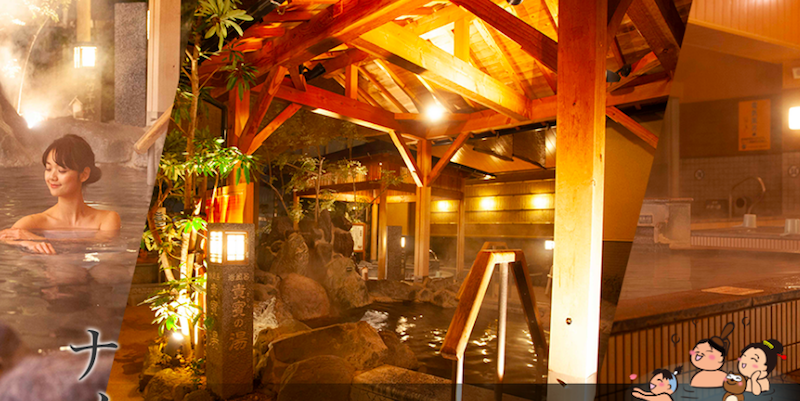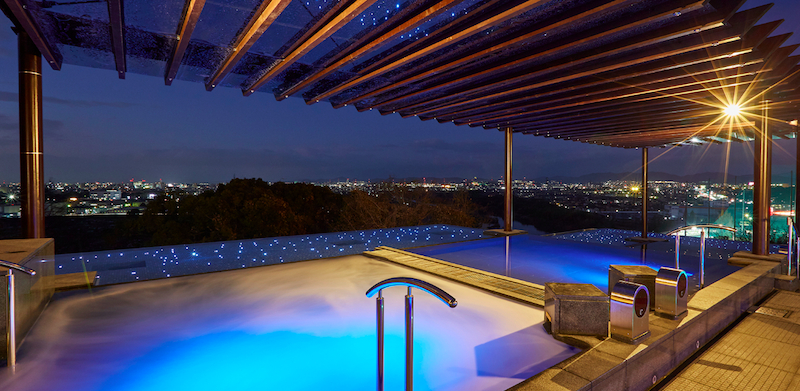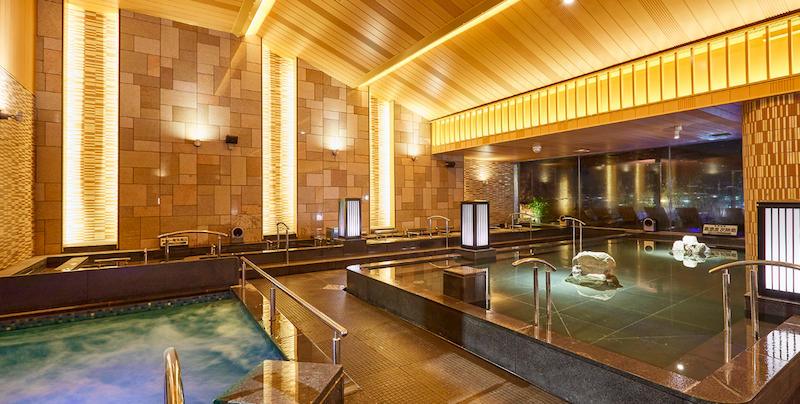Dec 26, 2019
Soothe Yourself With a Soak in a Super Sento in Nagoya This Winter
One thing that many people love to do when they come to Japan is to enjoy onsen, the volcanic hot springs that pop up all over the country. It is an intrinsic part of the Japanese culture to partake in these communal baths, and no trip to the country is complete without it.
However, the onsen is not the only place the locals go to soak in the tub. Particularly when not in the more seismically active areas of Japan (of which Nagoya is one), people still like to get naked and sit in a steaming bath and let the worries of the world wash away. For many, this means going to sento. For those who want to make an experience of it, that means super sento.
What’s a Super Sento?
Back in the days before the advent of running water in homes, many Japanese would go to sento, communal bathhouses in which, for a small fee, you could get yourself clean and relax together in the large bath. Today there are far fewer of these bathhouses. However, many people still believe in the importance of ‘hadaka no tsukiai’ (naked communication), in which everyone, rich or poor, worker or boss, old or young, is stripped down and placed on a level footing, many still exist in local communities, often marked with the Japanese character ゆ (yu), symbolizing hot water.
Super sento are the Disneyland of the sento world. They are vast, sprawling enterprises that often include saunas, steam baths, jacuzzis, and in some instances, may even have a water slide. Some may also offer medical baths, massages, mud baths, and fitness centers, and the larger ones may have restaurants and karaoke.
Super Sento in and Around Nagoya
There are many Super Sento in the Nagoya area, here are a few that you could check out.
Ozone Onsen Yunoshiro
Onsen Yunoshiro has twelve different baths, all of which are designated as ‘nano-springs’, which means that they claim to have high heat-retention qualities. Some of the baths are designed to look like famous onsen from around Japan, such as Ibusuki and Kutatsu.

After bathing, you can dine at their restaurant, which serves Japanese classics such as curry and rice and tempura rice bowls, as well as Nagoyan cuisine, including Ankake Pasta and Kishimen.
Where: 28-7 Higashi Ozone-cho, Higashi-ku (map)
Website: p-castle.co.jp/yunoshiro
Tenku Spa Hills Ryusenjinoyu Nagoya-Moriyama
Despite its claims to be the first super sento on all of Japan, Tenku Spa Hills is a top of the range bathing facility. There are thirteen types of bath, including ‘fantasy baths’, some of which are illuminated to look as though you are bathing amongst the stars, as well as an open-air bath that provides stunning night views of the city.

There are a number of other facilities, such as sofa beds, saunas, hot stone baths, restaurants, and cafes. Still, Tenku Spa Hills’ biggest selling point is the high concentration of carbonation in the water, creating a champagne bath effect that is said to improve the heat absorption of the water.
Where: 1 Chome-1501, Ryusenji, Moriyama Ward, Nagoya, Aichi 463-0801 (map)
Website: ryusenjinoyu.com/moriyama
Utopia Takara
Being part of a hotel complex, Utopia Takara is the largest super sento in the Nagoya area and is open 24 hours a day (though the baths are closed for cleaning between 3:00 and 6:00 in the morning).

There are thirty different baths, including a medicinal bath, a bath made of cypress wood, and a bubble bath. You can also enjoy eight different saunas, take your pick from 12,000 manga, and there are plenty of games for your kids to play with.
Where: Minami Ward, Maehamatori, 1 Chome−9 (map)
Website: yu-t.com
SPA&LIVING Urban Quar
While the water at sento is most often electrically heated, Urban Quar is fed from a hot spring 800 meters underground. The concept here is to relax as if you were at home, and the expansive rest areas have large, comfortable sofas, massage chairs, comic books, and computers as well as aromatherapy and Korean body scrub treatments.

There are eleven kinds of baths, including jet spas and carbonated springs. There is also a hot stone bath and two saunas. When you are done, indulge in the soba dishes that use 100 percent Juwari soba, something that you can only usually find in specialist soba stores.
Where: Naka Ward, Fujimicho, 16 − 17 Kyassurutaun kinen-bashi 3 F (map)
Website: p-castle.co.jp/urban_quar
Sumino-Yu (Charcoal Bath)
If you are looking for a real authentic Japanese sento experience, Sumino-Yu (meaning ‘charcoal bath’) is the place for you. This place is old school in the best possible way and has been beautifully renovated. The baths use infrared-infused charcoal, which is intended to be gentle on the skin and warming.
They have an outdoor bath, a cypress bath, a jet pool as well as a ‘denki buro’, which is a bath that has a low-frequency current of electricity in the water, which is supposed to aid in the healing process.
Where: 2-11-8 Kamejima, Nakamura Ward (map)
Website: suminoyuhotel.com
Things you should know about Super Sento
- Most sento may allow you to rent towels and charge you a small fee for soap, shampoo, and toiletries. You may want to ask before you arrive, or bring your own just in case.
- Many sento, like onsen, are a bit funny when it comes to tattoos. If you have a tattoo, check with the bath before you arrive if they are accepted.
- Most sento are for naked bathing, while some that allow unisex bathing will require you to bring a swimming suit. If you go to the latter, you may bring your own or rent one when you are there. Be aware, however, that they may stock Japanese sizes only.
Image: by http://www.p-castle.co.jp/yunoshiro/hotspring.php#anchor_tansansen – screenshot
Images: by https://www.ryusenjinoyu.com/moriyama/ – screenshot
Image: by https://www.yu-t.com/bath/ – screenshot
Image: by http://www.p-castle.co.jp/urban_quar/onsen.php – screenshot


About the author